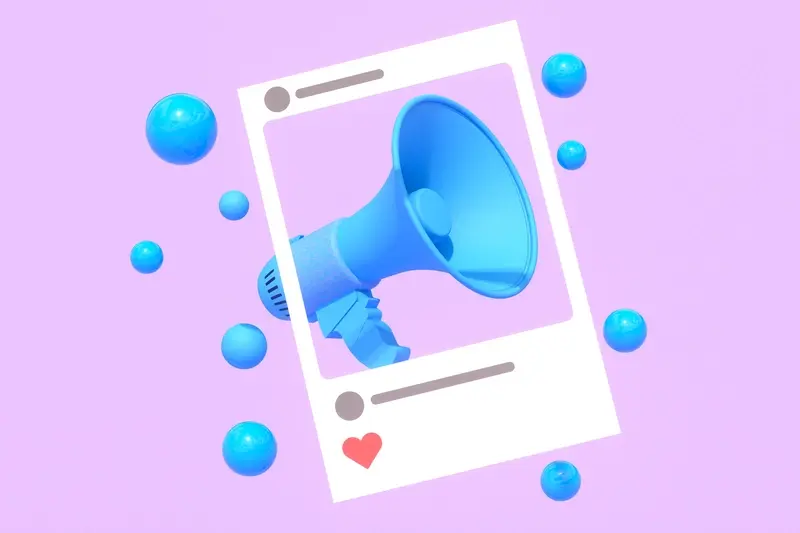Which Social Media Platform Works Best for App Marketing?
Getting your mobile app noticed in a crowded marketplace is tougher than ever—with over 5 million apps across the major app stores, standing out requires more than just hoping people will stumble upon your creation. Social media marketing has become the backbone of successful app promotion, but here's the thing: not every platform works the same way for mobile apps. I've seen brilliant apps struggle because they picked the wrong channels, and I've watched simple apps explode because they nailed their platform selection.
The mobile app advertising landscape has shifted dramatically over the past few years. Gone are the days when you could just throw money at Facebook ads and watch the downloads roll in; iOS privacy changes and rising ad costs mean we need to be smarter about where we spend our marketing budget. Each social platform has its own personality, user behaviour patterns, and advertising strengths—what works brilliantly for a fitness app on Instagram might completely flop for a B2B productivity tool.
The biggest mistake I see app developers make is trying to be everywhere at once instead of dominating the platforms where their actual users spend time
You need to understand your target audience first, then match them to the right platforms. A meditation app targeting stressed professionals? LinkedIn might surprise you with better results than TikTok. Gaming apps often thrive on platforms where you wouldn't expect them. The key is matching your app's purpose and audience with each platform's unique strengths—and that's exactly what we'll explore in this guide.
Understanding Social Media Platforms for Apps
Right, let's get one thing straight from the start—social media marketing for apps isn't just about posting pretty screenshots and hoping for the best. I've watched countless app developers throw money at Facebook ads or jump on TikTok trends without understanding what makes each platform tick. It's honestly a bit painful to watch!
Each social platform has its own personality, its own audience, and more importantly, its own way of consuming content. What works brilliantly on Instagram will fall flat on LinkedIn, and what goes viral on TikTok might get you zero engagement on Twitter. The trick is understanding these differences before you start spending your marketing budget.
Here's what I've learned after years of testing different approaches: the platform choice depends entirely on three things—your target audience, your app type, and your marketing goals. Sounds simple? Well, it gets a bit more complicated when you dig into the details.
Platform Demographics That Actually Matter
Sure, everyone talks about age ranges and gender splits, but that's just scratching the surface. What really matters is user behaviour and intent. Take Facebook—yes, it skews older now, but those users have spending power and they're comfortable making purchases through the platform. Meanwhile, TikTok users might be younger, but they're incredibly engaged and willing to try new apps if you can capture their attention in those first three seconds.
- Facebook/Instagram: Visual storytelling works best; users expect polished content
- TikTok: Raw, authentic content performs better than overly produced videos
- LinkedIn: Professional value must be immediately clear; no fluff allowed
- Twitter: Real-time engagement and community building; conversations matter more than followers
- YouTube: Educational content wins; users come here to learn and solve problems
- Snapchat: Playful, experimental; perfect for apps targeting Gen Z
The biggest mistake I see? Trying to be everywhere at once. Pick two platforms maximum to start with—ones where your users actually spend time, not where you think they should be.
Facebook and Instagram Marketing
Facebook and Instagram are still the powerhouses of mobile app advertising—and honestly, I've seen them deliver some of the best returns for my clients over the years. The reason? Their advertising platform is incredibly sophisticated; it knows more about users than any other network and can target your ideal app users with scary accuracy.
I mean, where else can you target "people who've downloaded similar apps in the last 30 days but haven't opened them recently"? That's pure gold for app marketers. Facebook's lookalike audiences feature is particularly brilliant—you can upload your best users data and find thousands more people just like them.
Instagram works beautifully for apps with visual appeal. Food apps, fitness trackers, photo editing tools—they absolutely shine on Instagram Stories and Reels. The platform's younger demographic also tends to be more willing to try new apps, which is perfect if you're targeting Gen Z or millennials.
Create video ads showing your app in action rather than static screenshots. I've seen conversion rates improve by 40% when clients switched from image ads to short demo videos.
Best Practices for Facebook and Instagram App Ads
Facebook's app install campaigns are designed specifically for mobile apps, and they work well when you get the targeting right. The key is starting with broader audiences and letting Facebook's algorithm learn who converts best—then narrowing down based on performance data.
- Use app install campaign objectives rather than general traffic campaigns
- Test different creative formats: carousel ads, video ads, and collection ads
- Target users of competitor apps (when available in audience insights)
- Set up proper app event tracking to measure beyond just installs
- Create separate campaigns for iOS and Android users
The biggest mistake I see? Focusing only on install numbers. Sure, downloads look good on paper, but if those users aren't engaging with your app after day one, you're basically burning money. Always track deeper metrics like day-7 retention and in-app purchases.
TikTok for Mobile Apps
TikTok's absolutely mental when it comes to app marketing—but not in the way most people think. I've seen clients spend thousands trying to crack this platform, and honestly? It's a completely different beast to Facebook or Instagram. The algorithm doesn't care about your fancy graphics or polished product shots. It wants authentic, entertaining content that keeps people scrolling.
The thing is, TikTok users aren't really there to discover apps in the traditional sense. They're there for entertainment, quick tips, and to kill time. But here's where it gets interesting—when you show your app solving real problems in creative ways, that's when the magic happens. I've watched apps go from zero to thousands of downloads because someone made a genuinely funny video about using the app in their daily routine.
Content That Actually Works
Forget about standard app demos. TikTok thrives on these types of content:
- Behind-the-scenes development moments (bugs, funny glitches, team reactions)
- Quick problem-solving videos showing your app in action
- User-generated content and genuine reactions
- Trend-jacking with your app as the hero
- Before/after transformations using your app
The catch? You need to be consistent and genuinely engaging. I mean really engaging—not corporate engaging. TikTok users can smell fake content from miles away, and the algorithm will bury you faster than you can say "download our app."
Budget-wise, TikTok can be surprisingly affordable if you nail the organic approach first. But don't expect overnight success—it typically takes months of consistent posting to build momentum. The platform works best for apps with visual appeal or clear, demonstrable benefits that translate well to short-form video.
LinkedIn for B2B and Professional Apps
Right, let's talk about LinkedIn—the platform that everyone either loves or finds a bit stuffy. But here's the thing, if you're marketing a B2B app or something aimed at professionals, LinkedIn is absolutely where you need to be. I've seen productivity apps, project management tools, and finance apps take off purely because they got their LinkedIn strategy right.
The beauty of LinkedIn is its targeting capabilities. You can literally narrow down to specific job titles, company sizes, and industries. When I worked on a CRM app for estate agents, we could target property professionals specifically—no wasted budget on people who'd never use the app. The platform's professional context means people are already in a business mindset; they're more receptive to tools that might help them do their job better.
Content That Works on LinkedIn
LinkedIn users respond well to educational content and case studies. Instead of flashy videos, think about sharing how your app solves real workplace problems. Screenshots of your app's dashboard with explanations work brilliantly here—people want to see exactly what they're getting. Industry insights, data-driven posts, and behind-the-scenes content about your development process all perform well.
The best LinkedIn campaigns for professional apps focus on demonstrating value rather than selling features
One thing that's worked consistently across B2B app campaigns is using LinkedIn's native video feature to show quick app demonstrations. Keep them under 60 seconds and focus on one specific problem your app solves. Also, don't ignore LinkedIn's messaging features—they're perfect for nurturing leads who've shown interest in your app but haven't downloaded yet. The conversion rates from LinkedIn to B2B app downloads are typically much higher than other platforms, even if the initial reach is smaller.
Twitter and App Communities
Twitter's a bit different from other platforms when it comes to app marketing, actually. It's not really about the pretty visuals or viral dances—it's about conversations, communities, and being genuinely helpful. I've seen apps build incredible followings on Twitter simply by engaging authentically with their users and industry peers.
The platform works brilliantly for real-time customer support. When someone tweets about a problem with your app, responding quickly and helpfully shows everyone else that you actually care about your users. It's free customer service that doubles as marketing, basically. Plus, Twitter's where developers, tech journalists, and early adopters hang out—these are the people who can make or break your app's reputation in its early days.
Building Your App Community on Twitter
Here's what actually works on Twitter for app marketing:
- Share behind-the-scenes development updates and progress shots
- Respond to user feedback and feature requests publicly
- Join conversations about industry trends and problems your app solves
- Tweet quick tips and tricks for using your app effectively
- Engage with other developers and potential partners in your space
- Share user-generated content and success stories
The key thing with Twitter is consistency rather than perfection. You don't need a massive following to be effective—you need an engaged one. I've worked with apps that have built thriving communities with just a few thousand followers who genuinely care about the product.
Twitter Spaces has also opened up new opportunities for app developers to host live discussions, Q&A sessions, and even virtual launch events. It's particularly useful for B2B apps where you can establish thought leadership in your industry. But honestly? The real value of Twitter for app marketing is in the relationships you build, not the follower count you achieve.
YouTube for App Demonstrations
YouTube is absolutely massive for app marketing, and honestly, its probably the most underrated platform when it comes to mobile app promotion. I mean, where else can you show your app in action for several minutes without worrying about character limits or disappearing stories? The platform's search functionality means people actively looking for solutions—exactly what your app provides—can find your content months or even years after you post it.
The beauty of YouTube lies in its ability to showcase your apps full potential. You can create proper walkthroughs, tutorial videos, feature highlights, and even behind-the-scenes development content that builds trust with potential users. What's particularly powerful is that YouTube videos often rank in Google search results, giving your app marketing efforts double the exposure.
Create a mix of content types: quick 60-second feature highlights for casual browsers and detailed 5-10 minute tutorials for users who are seriously considering downloading your app.
Types of Content That Work
- App store preview videos that you can also use in your listing
- Problem-solution videos showing real user scenarios
- Comparison videos against competitors (done respectfully)
- Tutorial series for complex apps
- User testimonial compilations
- Development process vlogs for building community
The key thing about YouTube is consistency. You don't need Hollywood production values—screen recordings with clear audio work perfectly fine. Actually, some of my most successful client campaigns have used simple screen captures with voiceovers explaining features. Users want to see how the app actually works, not fancy graphics.
YouTube also integrates beautifully with your other social media marketing efforts. You can repurpose YouTube content into shorter clips for TikTok and Instagram, create blog posts from your video scripts, and use the comments section to build genuine relationships with your potential users.
Snapchat and Younger Audiences
Right, let's talk about Snapchat—the platform that frankly, most app developers over 30 still don't quite get. But here's the thing: if your app targets Gen Z or younger millennials, ignoring Snapchat is like throwing money away. I've worked with clients who've seen their user acquisition costs drop by 40% when they finally cracked Snapchat marketing.
Snapchat's users are young, engaged, and they spend serious time on the platform. We're talking about people who check their phones 150+ times a day, and Snapchat is often their first stop. The platform reaches over 75% of 13-34 year olds in many markets, which is mental when you think about it.
What makes Snapchat different? It's all about authentic, unpolished content. The perfectly curated Instagram posts that work elsewhere? They'll fall flat here. Snapchat users want to see behind-the-scenes content, quick tutorials, and genuine reactions to your app.
Snapchat Marketing Strategies That Actually Work
- Snap Ads that feel native to the platform—vertical video, quick cuts, no fancy graphics
- AR lenses and filters that let users interact with your app's features
- Story ads that blend seamlessly with user-generated content
- Influencer partnerships with creators who genuinely use your app
- Geofilters for location-based apps or local events
One gaming client saw their install rates jump 60% when they created a custom lens that let users preview their game's characters. The key was making it fun first, promotional second.
Snapchat's ad targeting is surprisingly sophisticated too. You can target based on interests, behaviours, and even life events. But remember—this audience has zero patience for anything that feels like traditional advertising. Keep it quick, keep it real, and always lead with entertainment value.
Choosing the Right Platform Mix
Right, so you've read about all these different platforms and you're probably thinking "bloody hell, how do I choose?" I get it—there's loads of options and they all seem important. But here's the thing, you don't need to be everywhere at once. In fact, trying to juggle every single platform is one of the biggest mistakes I see app developers make.
The key is starting with your audience. Where do they actually spend their time? If you're building a productivity app for business professionals, LinkedIn makes sense; TikTok probably doesn't. Building a gaming app for teenagers? TikTok and Snapchat should be your focus, not LinkedIn. It sounds obvious but you'd be surprised how many people get this wrong.
Quality Over Quantity
I always tell my clients to pick 2-3 platforms max when they're starting out. Do those really well rather than spreading yourself thin across six different channels. You can always expand later once you've got a solid foundation.
The most successful app marketing campaigns I've worked on focused their energy on just two platforms but executed them brilliantly
Consider your resources too—both time and budget. Facebook and Instagram ads can work well but they need proper budget behind them to compete. TikTok might be free to post on but creating good video content takes time. YouTube demonstrations are fantastic for complex apps but editing videos isn't exactly quick work.
Testing and Adapting
Start with what makes sense for your app and audience, then test everything. Track your downloads, engagement rates, and most importantly, which platforms actually convert into paying users. Some platforms might give you loads of downloads but rubbish retention rates. Others might have fewer downloads but higher-quality users who stick around.
The mobile app world changes fast—new platforms emerge, algorithms shift, user behaviour evolves. What works today might not work in six months, so stay flexible and keep testing.
After eight years of launching apps across every social platform you can think of, I've learned that there isn't a magic bullet when it comes to social media marketing. The platforms that work best for your app depend entirely on who you're trying to reach and what problem your app solves.
Here's what I know for sure—you don't need to be everywhere at once. In fact, trying to maintain a presence on every platform usually means you'll do a mediocre job on all of them instead of excelling on the ones that matter. I've seen startups burn through their marketing budget trying to create content for six different platforms when they should have focused on mastering two.
The apps that succeed pick their battles wisely. B2B productivity apps that ignore LinkedIn are missing their entire audience. Gaming apps that skip TikTok are leaving downloads on the table. Fitness apps that don't leverage Instagram's visual storytelling capabilities? They're making their marketing ten times harder than it needs to be.
But here's the thing that really matters—social media marketing for apps isn't just about getting downloads anymore. It's about building communities of users who genuinely care about what you've built. The platforms that help you create those connections, whether it's through YouTube tutorials that solve real problems or Twitter conversations that turn users into advocates, those are the ones worth your time and budget.
Start with one platform that aligns perfectly with your audience. Master it completely. Then, and only then, consider expanding. Your app deserves focused attention, not scattered efforts across platforms that don't move the needle for your specific users.
Share this
Subscribe To Our Learning Centre
You May Also Like
These Related Guides

Which Free Marketing Channels Work Best for New Apps?

How Do I Know Which Marketing Channel Works Best?



